The Power to the Pixel’s annual Cross-Media Forum, showcasing the latest developments in multiplatform production in the digital media world over the past 12 months, unfolded at the BFI’s Southbank this week.
“The forum is our annual centrepiece event,” said Liz Rosenthal, founder and CEO of the digital media consultancy which runs workshops and consults on the art of capturing audiences across platforms throughout the year.
As the three-day event marked its seventh edition, the mood was in part reflective as the likes of Xbox chief design engineer Elan Lee, respected transmedia storyteller Lance Weiler and interactive docs guru Ingrid Kopp, shared some of the lessons they had learned working across multiple platforms in recent years.
LESSONS LEARNED
LA-based Lee, who recently re-joined Microsoft as the chief design officer for its Xbox Entertainment Studios after a decade of launching and running a slew of interactive entertainment start-ups, gave a potted history of his successes and failures, demonstrating at the same time how any thing from a rock album to a designer t-shirt to a personality test can be used as a “conduit” for a story.
Past successes included the creation of a futuristic story-world and interactive game around The Nine Inch Nails’ 2007 album Year Zero and the clothing company EDOC Laundry, which used message-laden garments as a platform for an interactive murder mystery, which also educated players about American political history in the lead-up to President Barack Obama’s election in 2008 at the same time.
He revealed, however, that he felt his recent foray into interactive television via his LA start-up Fourth Wall Studios had been less that successful, even though the company won a Primetime Emmy for the series Dirty Work.
“It was kind of like TV, we were using TV as a conduit so that while you were watching TV, a character would make a call and the cell-phone in your pocket would go off and you’d get a message… it did pretty well and we made a lot of shows but I feel the conduit was wrong. I came to the conclusion that when people watch TV they don’t want to necessarily interact, they want to sit back and watch TV,” said Lee.
Lee said his new role at the Xbox Entertainment Studios — launched earlier this year to build original content for Xbox and support Microsoft’s plans to transform the games console into a more wide-ranging entertainment hub — was a natural progression from the Fourth Wall experiment but he did not reveal details of the new interactive projects he is working on there.
Respected cross-media producer and storyteller Lance Weiler said that after more than a decade of working on award-winning transmedia fare – such as Collapsus: The Energy Risk Conspiracy and Bear 71 — he still found it challenging meshing his creative vision for a project with the technological side.
“Storytelling for me is a very organic process. I want to drill down and find the truth. I spend a lot of time thinking about how I can harness not just the storytelling but also the technology, the game side, the site design… I tend to get all of the stakeholders together at the beginning of a project for a day to a week to shape the idea and work toward a design question which we can use as a filter all the way through the process,” he explained.
In a talk entitled “What robots, coal minors and mobile phones have taught me about storytelling and social change”, Ingrid Kopp took stock of her tenure as director of digital initiatives at the Tribeca Film Institute.
“It has been an amazing ride but one of things I have learnt is that sometimes you have to push back on the technology. I am by no means a luddite but doing this job has fundamentally changed how I think about story-telling and how I think stories can connect audiences,” she said. “Sometimes we become so caught up in the technology that we forget out the story we want to tell in the first place and we forget about the audience…. I am constantly thinking about how do we bring humanity into the space to make sure we’re really engaging with the audience. “
Under Kopp’s watch, TFI’s digital initiatives have expanded to include the TFI New Media Fund, which backs non-fiction social issue projects, the annual TFI Interactive conference and the Tribeca Hacks initiative, bringing story-tellers and technologists together to create rudimentary story-telling platforms
EXPANDING THE CROSS-MEDIA AUDIENCE
There was a sense at this year’s conference that the independent cross-media scene is increasingly ditching its fringe, avant-garde image and reaching out to audiences that would not have necessarily tapped into its productions five years ago.
Kopp explained how the remit of the TFI’s New Media Fund, as handed to it by its benefactors the Ford Foundation, was to draw in new audiences who did not watch documentaries.
Two fund-backed projects which exemplified this approach, she said, were 18 Days in Egypt, a social media archive of the Egyptian revolution, and New Day New Standard, a New York-based project revolving around a flyer campaign and radio show aimed at informing domestic workers of their rights.
Weiler, meanwhile, presented his on-going Lyka’s Adventure project – a multi-platform educational work fronted by a cuddly robot with a big heart – which he hopes will connect with thousands of children across the globe.
Alongside this, he also touched on his collaboration with David Cronenberg on Body/Mind/Change, a more avant-garde work inspired by the director’s Videodrome and made to accompany the Toronto International Film Festival’s David Cronenberg: Evolution exhibition which kicks off in November.
Xbox’s Lee also touched on the need for cross-media creatives to branch out into new demographics.
“While it’s true that I have a very targeted audience demographic that I’m trying to hit I believe that a really fine measure of my own success is the ability to have my Mom speak about this—to say ‘I know what this storytelling is, it may not be for me but it’s not just for the kids’—it’s a kind of storytelling that makes sense and she can opt into it just as easily as she would a TV programme or a movie,” he said in his keynote.
Conversely, the mainstream appears to be increasingly taking a cross-media approach to get its message across.
New York entrepreneurs Radha and Miki Agrawal presented their Super Sprowtz healthy eating campaign which had connected with “millions of children” through a set of superhero vegetable characters, dedicated YouTube channel, TV shows, live events and decorated food trolleys and hand-puppets.
Digital media communications expert Wayne Fletcher, global strategy officer at communications strategy group Naked Communications, talked about how global brands – such as Dove and Coca Cola – had started taking a cross-media approach to reach consumers.
The Dove Campaign for Real Beauty, based on the marketing research that found only 4% of the world’s women consider themselves beautiful, kicked off with a series of billboard portraits by Annie Leibovitz of ordinary women from across the world. The initiative then branched into sleepover events, a book, theatre production and viral videos. Fletcher said sales of Dove’s soap products had gone up as a result of the campaign.
Fletcher said there was a “white space” where cross-media creatives and media and advertising agencies could start collaborating more closely.
“Advertisers have more cash than imagination and you guys have the imagination. I think there is a new space in which we can tell different types of stories and it’s a space we can occupy together,” said Fletcher.
Other case studies at Monday’s conference included beActive’s new Collider franchise – a sci-fi story told across comics, a Youtube web-series, mobile games app, graphic novel and a finally a feature film which premiered in London on Tuesday night and will go on general release in the UK at the beginning of 2014.
The forum also included The Pixel Pitch market which presented 30 projects to commissioners and financiers from across the media world and a VIP Think Tank bringing together different parts of the media industry to discuss the implications of media converge.

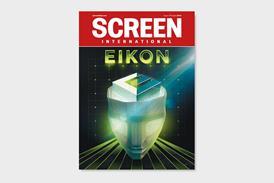
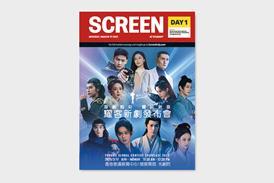

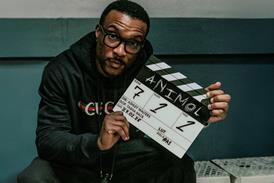


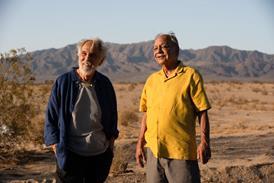





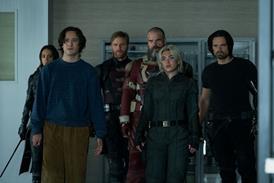



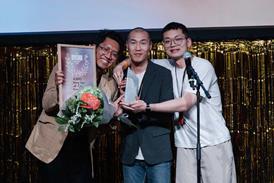







No comments yet